SME Finance Policy Guide
SME Finance Policy Guide
SME Finance Policy Guide
You also want an ePaper? Increase the reach of your titles
YUMPU automatically turns print PDFs into web optimized ePapers that Google loves.
G-20 <strong>SME</strong> FINANCE POLICY GUIDE<br />
81<br />
ANNEX I<br />
Access to <strong>Finance</strong> for <strong>SME</strong>s in LDCs<br />
Access to finance remains a key constraint to <strong>SME</strong>s<br />
development especially in emerging economies. 93 For<br />
example, data from World Bank Enterprise Surveys<br />
indicate that access to finance is disproportionately difficult<br />
for <strong>SME</strong>s in Least Developed Countries (LDCs).<br />
As shown in Figure 1, 41 percent of <strong>SME</strong>s in LDCs<br />
report access to finance as a major constraint to their<br />
growth and development, compared with 30 percent<br />
in middle-income countries (MICs) and only 15 percent<br />
in high-income countries. 94<br />
Figure 1 Access/Cost of <strong>Finance</strong> as a<br />
Major Constraint<br />
60<br />
50<br />
40<br />
30<br />
20<br />
10<br />
0<br />
15<br />
High Income<br />
30<br />
Middle Income<br />
41<br />
Least Developed<br />
Countries<br />
<strong>SME</strong>s in their early stages of development rely on internal<br />
sources of funding, including the owner’s personal<br />
savings, retained earnings, or funding through the sale<br />
of assets. As firms starts expanding, external sources<br />
become more important and their availability can<br />
determine the firms’ growth possibilities. External<br />
finance is positively and significantly associated with<br />
productivity and conversely, while financing from<br />
internal funds, and other informal sources, is typically<br />
negatively associated with growth and firm performance.<br />
95 Figures 2 and 3 show how <strong>SME</strong>s use different<br />
financing sources for working capital and fixed investments<br />
by country income groups. LDC <strong>SME</strong>s show a<br />
higher dependence of internal financing compared<br />
with <strong>SME</strong>s in more developed countries. Their use of<br />
bank financing 96 is significantly lower than high- and<br />
medium-income groups. Supplier credit, an arrangement<br />
between two businesses that allows delaying<br />
payment for the goods and services purchased, seems<br />
to be a substitute for bank financing to meet shortterm<br />
working capital needs.<br />
Bars indicate standard deviation across countries<br />
Source: World Bank Enterprise Surveys, 2006-2009<br />
Figure 2 <strong>SME</strong> Working Capital:<br />
financing sources<br />
100<br />
80<br />
60<br />
40<br />
20<br />
0<br />
10 7 6<br />
8 11 11<br />
15<br />
67 70 76<br />
High Income<br />
Internal Financing<br />
Middle Income<br />
Supplier Credit Financing<br />
Source: World Bank Enterprise Surveys<br />
12<br />
Bank Financing<br />
8<br />
Least Developed<br />
Countries<br />
Other Financing<br />
15<br />
12<br />
9<br />
6<br />
3<br />
0<br />
15 8<br />
High Incom<br />
Bank<br />
Other<br />
93 See Beck, Demirgüç-Kunt and Maksimovic (2005)<br />
94 Numbers by income group are simple averages of all countries, with data available, that fall in the group.<br />
95 Beck, Demirgüç-Kunt, and Levine. (2005)<br />
96 See Beck, Demirgüç-Kunt and Maksimovic (2008)



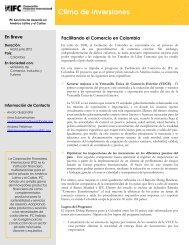
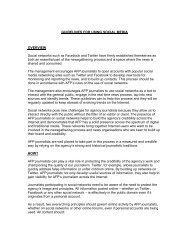
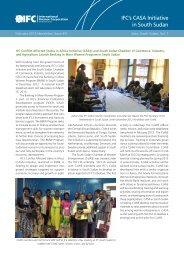

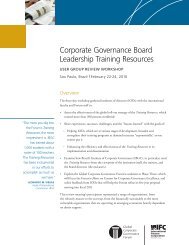




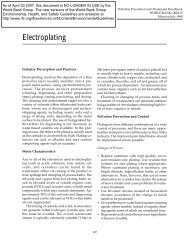

![Print a two-page fact sheet on this project [PDF] - IFC](https://img.yumpu.com/43449799/1/190x245/print-a-two-page-fact-sheet-on-this-project-pdf-ifc.jpg?quality=85)


